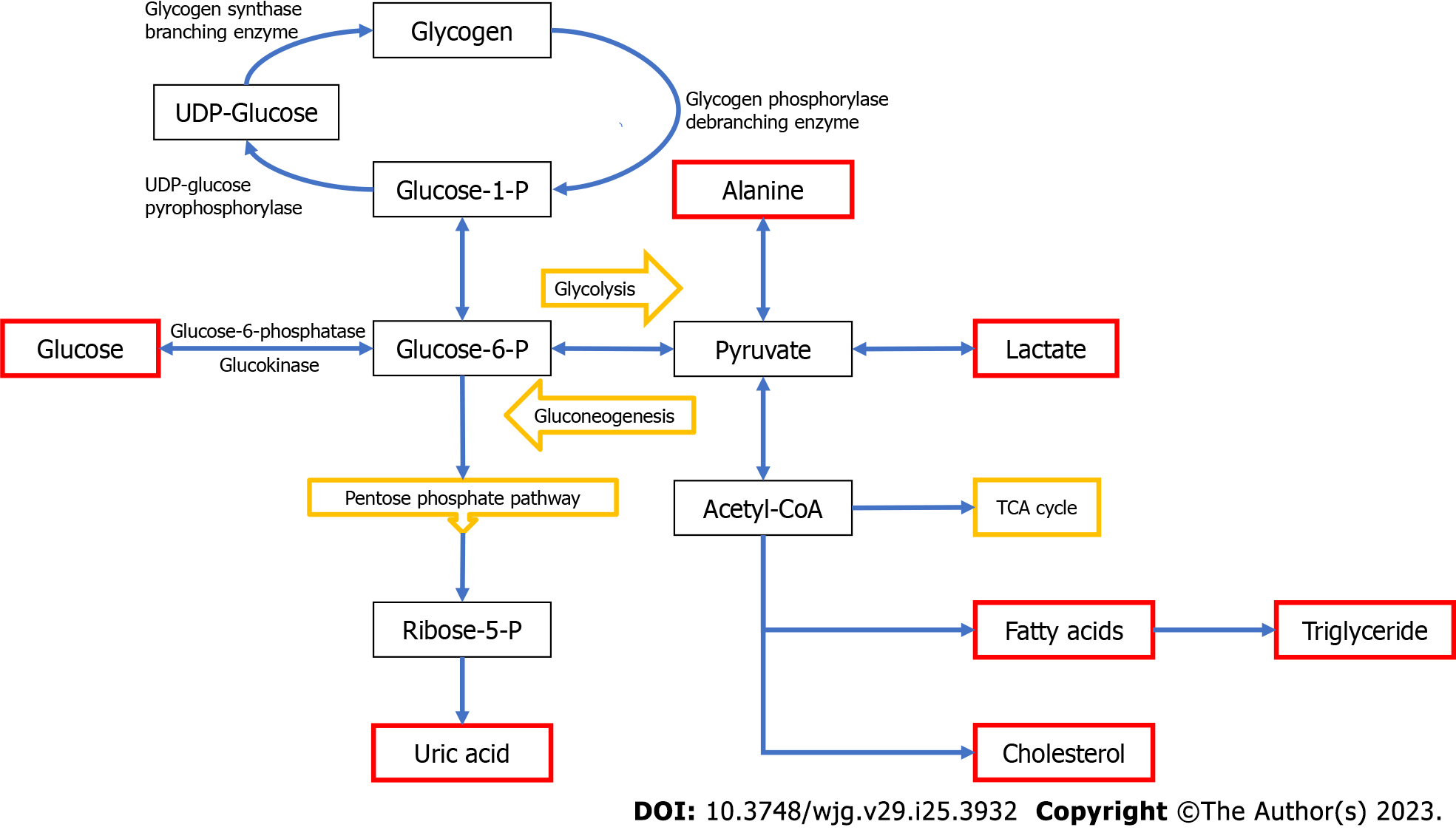Copyright
©The Author(s) 2023.
World J Gastroenterol. Jul 7, 2023; 29(25): 3932-3963
Published online Jul 7, 2023. doi: 10.3748/wjg.v29.i25.3932
Published online Jul 7, 2023. doi: 10.3748/wjg.v29.i25.3932
Figure 1 Simplified pathway of glycogen synthesis and degradation in hepatocytes.
Glucose and glycogen convert into one another via synthesis or degradation (glycogenolysis) through various steps. The liver plays a central role in maintaining normoglycemia. During the fasting state, the liver maintains glucose homeostasis via a metabolic shift from synthesizing glycogen to endogenous glucose production by glycogenolysis and gluconeogenesis. Specific enzyme or transporter defects in these pathways are associated with clinical and biochemical manifestations including hepatomegaly, hypoglycemia, hyperlipidemia, hypertriglyceridemia, hyperlactatemia, and hyperuricemia. GSD: Glycogen storage disease; UDP-Glucose: Uridine diphosphate glucose; Glucose-1-P: Glucose 1-phosphate; Glucose-6-P: Glucose-6-phosphate; Acetyl-CoA: Acetyl coenzyme A; TCA: Tricarboxylic acid.
- Citation: Gümüş E, Özen H. Glycogen storage diseases: An update. World J Gastroenterol 2023; 29(25): 3932-3963
- URL: https://www.wjgnet.com/1007-9327/full/v29/i25/3932.htm
- DOI: https://dx.doi.org/10.3748/wjg.v29.i25.3932









